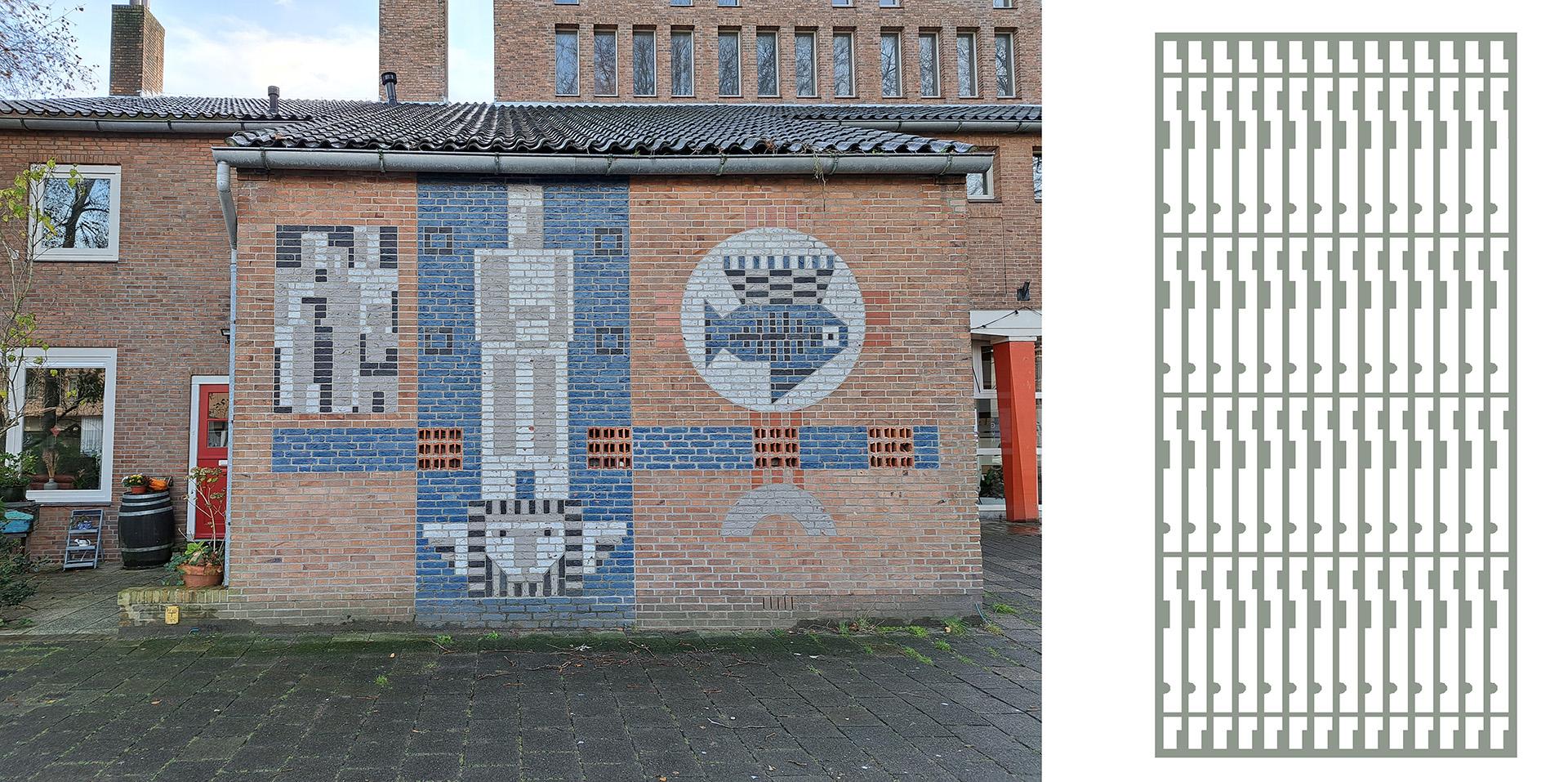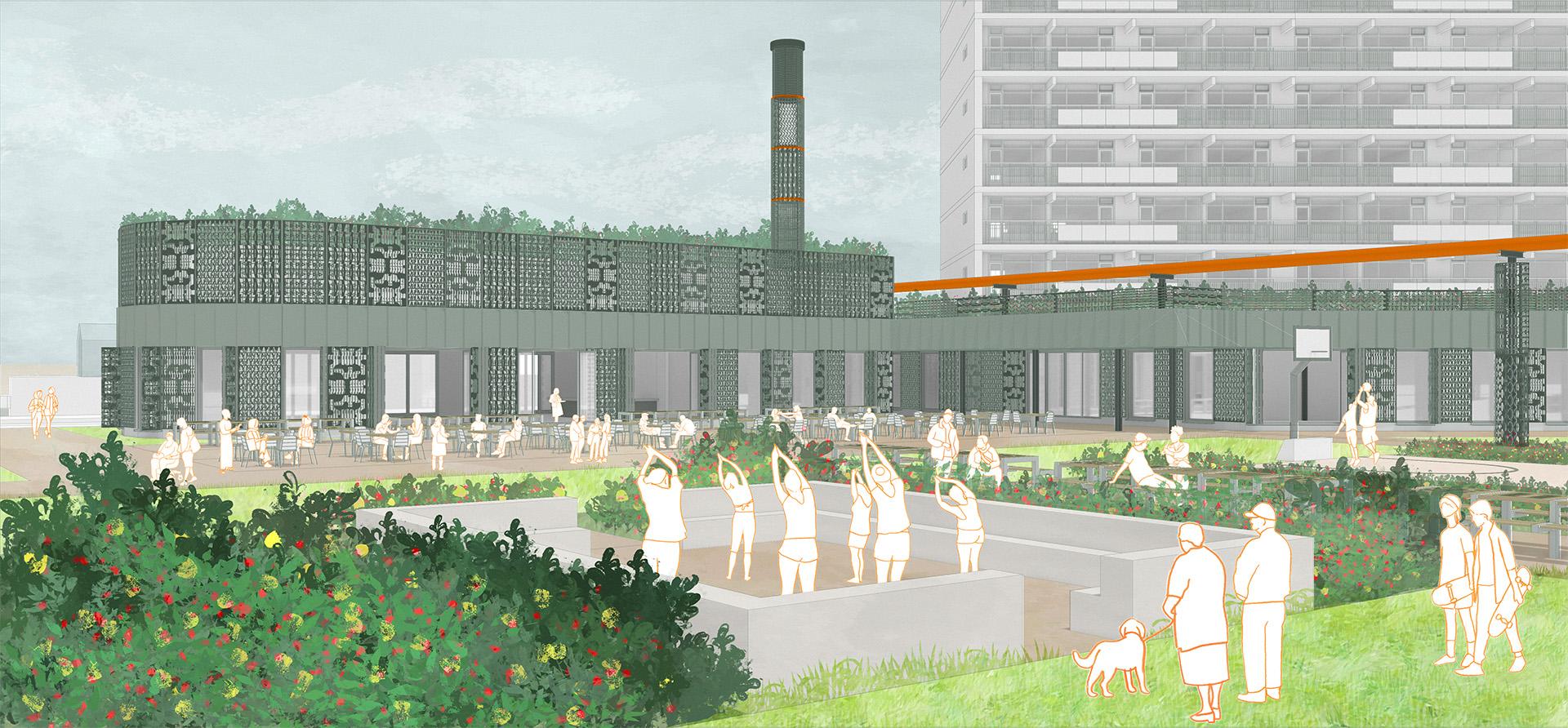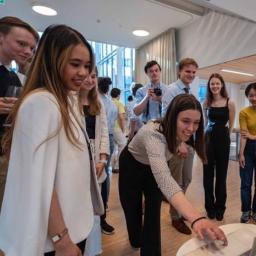In 2023, construction started on a pipeline transporting heat from Rotterdam to The Hague. The accompanying disruptions led to a cooling of enthusiasm in the neighbourhood of Moerwijk for heat networks. Yet MSc student Thomas Misset sees an opportunity, precisely here and now. He made an inclusive plan for an above-ground heat grid, which, in addition to sustainable energy, also provides the neighbourhood with colour and social cohesion. Because the right design choices bring physical as well as social warmth.
 When talking to Thomas, you quickly notice his enthusiasm for his trade. 'I see architecture as the connector between people, society, art, technology... Usually my projects aim facilitate the exchange between the drawing board and the user experience. In other words, involving residents when planning large projects.' For his thesis assignment, he ended up at Leiden-Delft-Erasmus Scriptiewerkplaats Den Haag Zuidwest (Thesis workshop The Hague South-West), where students find their link to the city. He was the only one from TU Delft this year. From there, Thomas headed into Moerwijk.
When talking to Thomas, you quickly notice his enthusiasm for his trade. 'I see architecture as the connector between people, society, art, technology... Usually my projects aim facilitate the exchange between the drawing board and the user experience. In other words, involving residents when planning large projects.' For his thesis assignment, he ended up at Leiden-Delft-Erasmus Scriptiewerkplaats Den Haag Zuidwest (Thesis workshop The Hague South-West), where students find their link to the city. He was the only one from TU Delft this year. From there, Thomas headed into Moerwijk.
'Why should we care about a heat grid?'
Suddenly a Delft student was planting trees in the community garden, or helping out at the food bank. Thomas also served affordable meals at the participation kitchen. When questioned, he would answer truthfully: 'I want to do a design project for a local heat grid.' Not everyone was thrilled, which at times became painfully obvious: 'People here can't even spell 'energy transition'! We have better things to worry about.' In moments like that, Thomas just had to bite his tongue. He was not in the neighbourhood to engage in discussion, but to gain perspective.
I believe that a local heat grid can benefit the neighbourhood, but only if we get the residents involved!'
After these experiences, and interviews with residents, Thomas better understands their frustration. ‘Many people have difficult contact with authorities, who seem to ask all kinds of things of them and only offer temporary help. One man phrased it as: you have to teach people to fish, not give them a fish every day.' He felt quite overwhelmed: how do you design for such a critical audience? But in addition, he also found inspiration. 'For example, that orange is the colour of Moerwijk because of the orange train station.' He came across unique brick ‘mosaics’; an existing network of green corridors; and social hotspots with a lot of potential, such as an underused park next to art studios or a tucked-away social restaurant.

Wall mosaics thanks to car components
That's how Thomas came up with his design for a local heat grid: orange pipes winding into the neighbourhood through its green corridors. One source of inspiration are the pink tubes that drain Berlin's excess groundwater (google them!). According to Thomas, a heat grid can also work just fine above ground. 'This makes installation and maintenance much easier: no broken streets or uprooted trees. It also allows for additions such as swings or punching bags. The tubes are well insulated, so their outsides stay cool.' Their twists are not only aesthetic, but also serve a practical purpose: 'this way, the tubes can expand when heated! I want to wrap them around transformer houses and distribution stations, or have them outline a picnic area.'
I give the hotspots an open and inviting character and make them accessible to a diverse audience.'
The tubes end at the five social hotspots Thomas encountered in the neighbourhood. In his vision, these spots would be given a makeover. 'I give them an open and inviting character and make them accessible to a diverse audience.' He wrote an overall strategy for the five hotspots, and worked out two in more detail. One is the aforementioned underused park. Thomas designed a community centre, with a large hall for a café and podium and separate spaces for creative groups. Part of the facade generates solar energy, the rest replicates the Moerwijk mosaics thanks to leftover plates from cut-out car parts. The floors and roofs are made of old scaffolding boards, the insulation material is bio-based, and the roof terrace is surrounded by plants.

Coming full circle
Now comes the most important step. On Wednesday 10 July, Thomas will submit his design for discussion at the final meeting of the Thesis Workshop. He will definitely receive feedback from the Moerwijk organisations he visited. In addition, he hopes to hear from as many residents as possible. After all, this interchange is essential for the success of his project. “There is a common expectation that work will start on some form of a local heat network in the next 10 years. Now is the time to steer those plans by involving residents. Let's prove together that sustainable technology can really contribute to the neighbourhood."
More information
Thomas is pursuing the master's degree programme AUBS. He will graduate as part of the Architectural Engineering studio under the supervision of Anne Snijders.
More information about the Scriptiewerkplaats is on their website. See also the registration link for the final meeting in Moerwijk where, among other projects, Thomas' design will be discussed.


